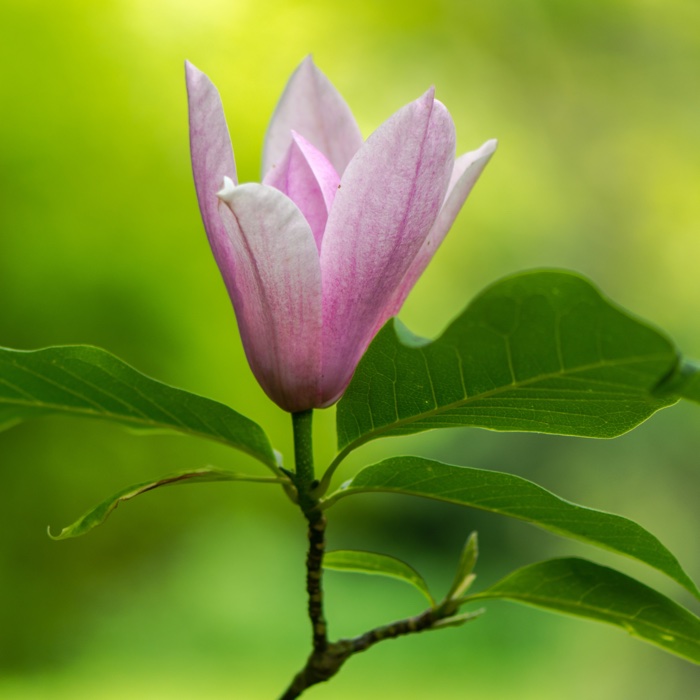Botanical collection

Magnolia
Common name: Magnolia
Latin name: Magnolia ‘Heaven Scent’
Family: Magnoliaceae
Origin: China, Nepal and Myanmar
Features:
The Magnolia genus derives from the name Pierre Magnol, professor of medicine and director of the Botanical Garden of Montpellier, who lived between 1638 and 1715.
Tree or large deciduous shrub, which can reach a height of 8-12 metres and as much in width, with a vertical main trunk and enlarged branches, very resistant to frost. It prefers sunny positions and does not tolerate pruning well. It has a slow growth, in fact for the plant to reach its maximum development it takes at least 15-20 years.
This plant is a hybrid of two magnolias, M. liliiflora x M. xveitchii.
Its large ornamental and fragrant flowers are purple pink on the outside and white on the inside, up to 12 cm long, appearing in March-April.
Especially in older plants they arise with incredible abundance and in optimal conditions have a long flowering period.
Its oval-elliptical leaves are green, shiny, with full margin and up to 20 cm long. In autumn they change to an intense light yellow colour.
Very ornamental plant and appreciated for its spectacular spring bloom, is abundantly used in gardens and parks as isolated specimen on the lawn or in flowerbeds associated with lower shrubs.
Curiosity: similar to lilies, the flowers grow on bare branches.
Selection for the park: low deck plant; trunk circumference 30-35 cm; height 6-7 metres.
Botanical information powered by AG&P
See on the map


